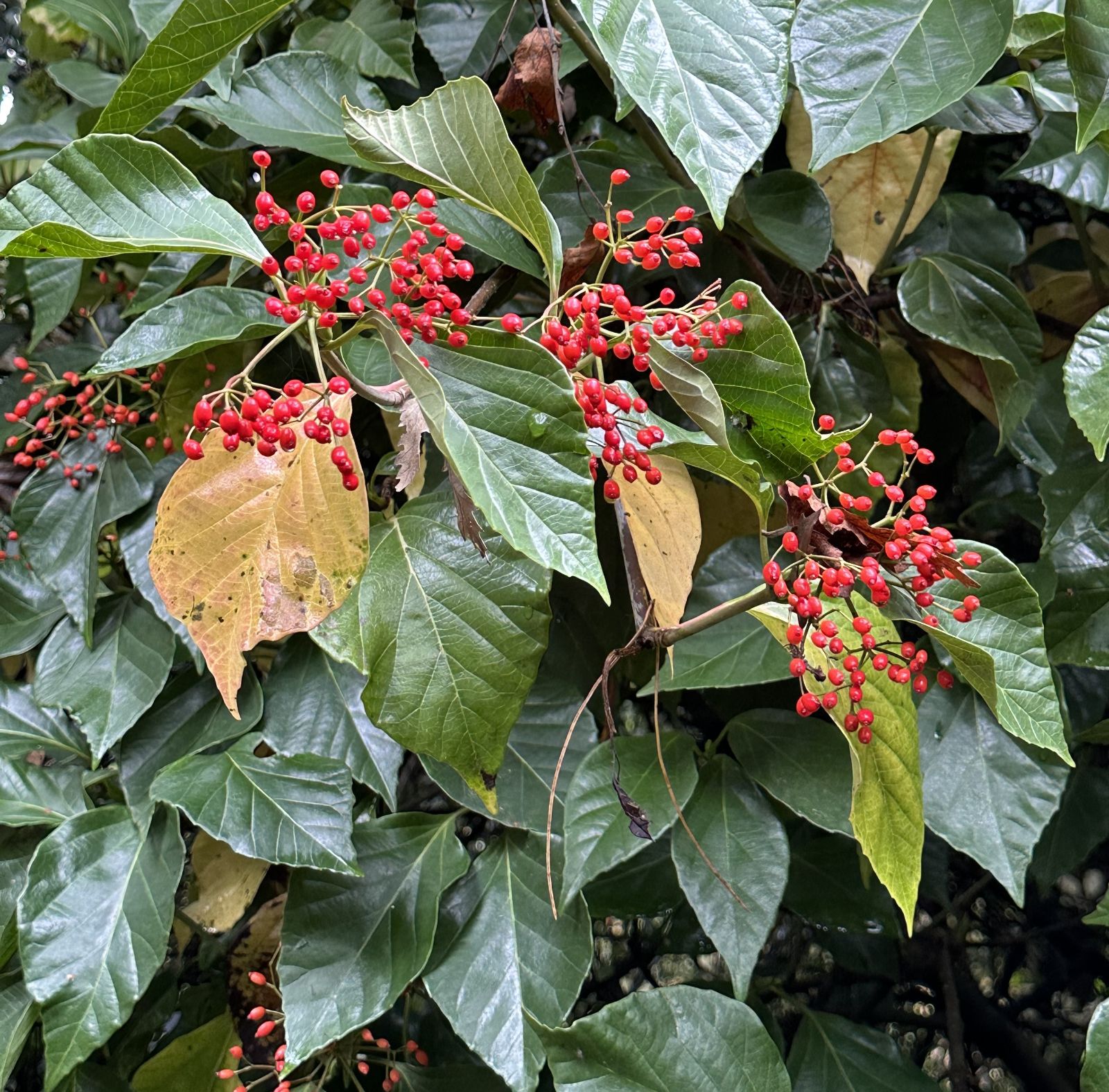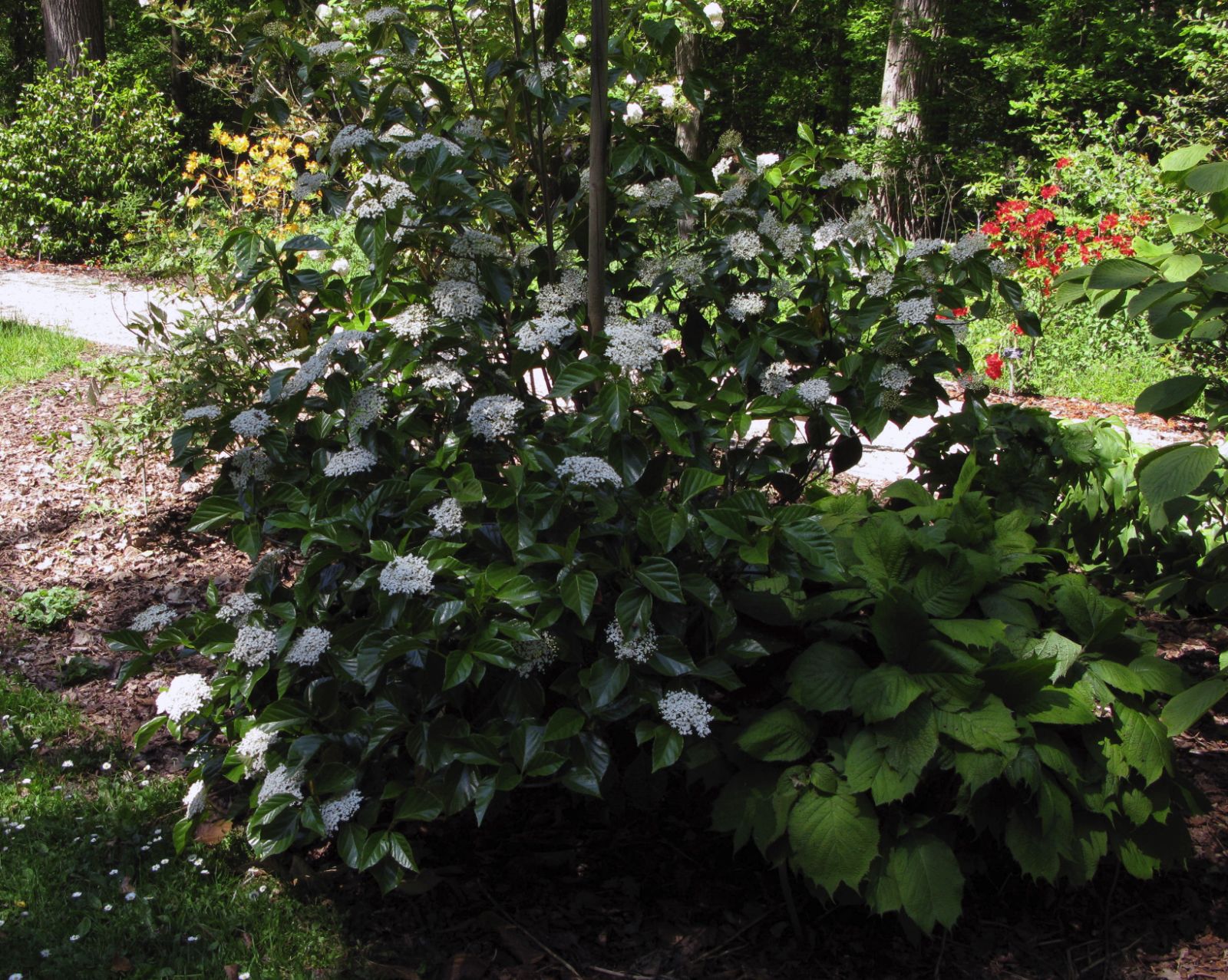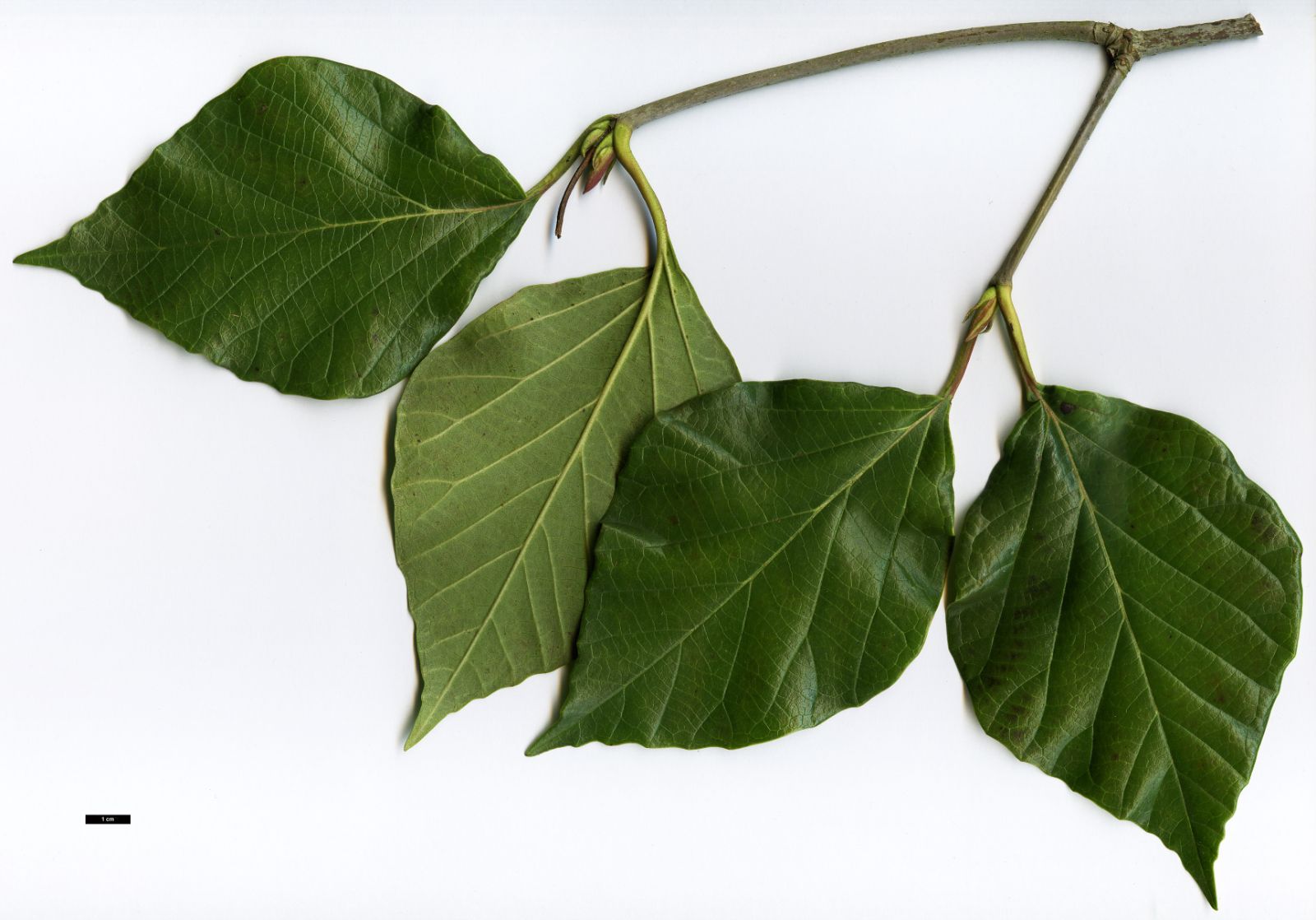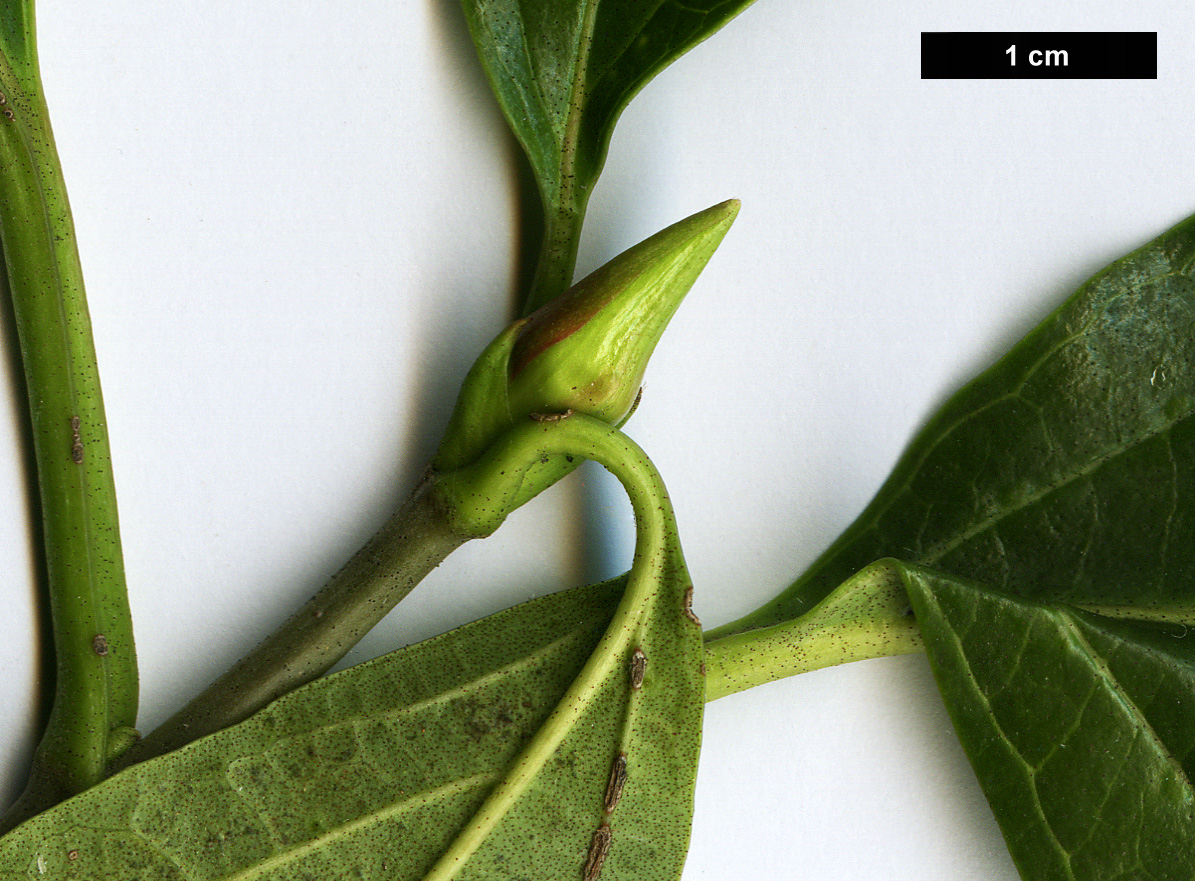Viburnum japonicum
Credits
Article from Bean's Trees and Shrubs Hardy in the British Isles
Recommended citation
'Viburnum japonicum' from the website Trees and Shrubs Online (treesandshrubsonline.
Genus
Synonyms
- Cornus japonicus Thunb.
- V. macrophyllum Bl.
Infraspecifics
Other taxa in genus
- Viburnum acerifolium
- Viburnum betulifolium
- Viburnum × bodnantense
- Viburnum buddleifolium
- Viburnum burejaeticum
- Viburnum × burkwoodii
- Viburnum × carlcephalum
- Viburnum carlesii
- Viburnum cassinoides
- Viburnum cotinifolium
- Viburnum cylindricum
- Viburnum davidii
- Viburnum dentatum
- Viburnum dilatatum
- Viburnum erosum
- Viburnum farreri
- Viburnum foetidum
- Viburnum grandiflorum
- Viburnum harryanum
- Viburnum henryi
- Viburnum hupehense
- Viburnum kansuense
- Viburnum lantana
- Viburnum lantanoides
- Viburnum lentago
- Viburnum macrocephalum
- Viburnum molle
- Viburnum nudum
- Viburnum odoratissimum
- Viburnum opulus
- Viburnum phlebotrichum
- Viburnum plicatum
- Viburnum propinquum
- Viburnum prunifolium
- Viburnum rhytidophyllum
- Viburnum rigidum
- Viburnum rufidulum
- Viburnum schensianum
- Viburnum setigerum
- Viburnum sieboldii
- Viburnum suspensum
- Viburnum tinus
- Viburnum utile
- Viburnum veitchii
- Viburnum wilsonii
- Viburnum wrightii
A sturdy, evergreen bush up to 6 ft high in this country, with thick, glabrous young shoots. Leaves leathery, usually ovate (sometimes very broadly so), but also roundish, oval or obovate, 3 to 6 in. long, half to nearly as much wide, abruptly pointed or with a short, slender apex, the base entire and rounded or tapering, the terminal part remotely and shallowly toothed or merely wavy; both surfaces quite glabrous, the upper one dark glossy green, the lower one paler but with innumerable tiny dark dots; stalk 1⁄2 to 11⁄4 in. long. Flowers uniformly perfect, 3⁄8 in. wide, white, very fragrant, produced in rounded short-stalked, often seven-rayed cymes 3 to 41⁄2 in. across. Fruits round-oval, 1⁄3 in. long, red.
Native of Japan; probably first introduced by Maries in 1879. Richard Oldham, who collected it in Nagasaki in 1862, describes it as ‘a small tree on the hills,’ but it does not make more than a sturdy bush with us. It appears to be quite hardy at Kew, but grows slowly in the open, and is no doubt happier in a warmer climate. On a wall it makes a pleasing and striking evergreen. This species has been much confused in gardens with V. odoratissimum, but it may be distinguished in the following respects: The young wood is not so warted as in V. odoratissimum; the secondary veins run out to the margin of the leaf; the inflorescence is rounded and umbel-like rather than paniculate.
yellow-splashed
Synonyms / alternative names
'Variegatum' inval.
A clone with variably variegated foliage, evidently as an effect of transposable genetic elements (‘jumping genes’) expressing irregularly; Dirr aptly likens it to marble cake. He observed that it easily reverts to green and Hatch (2018–2020) recommends propagating it from the most variegated shoots to preserve this not unattractive feature. Although it is grown in (perhaps only a few) American gardens as ‘Variegatum’ and referred to as such (or ‘Variegata’) by Hatch and Dirr, this name is almost certainly invalid under the code of nomenclature for cultivated plants. Hatch refers to the Japanese publication on variegated plants by Hirose and Yokoi where it features under the descriptor “yellow splashed” and although we have not been able to verify this reference (JMG November 2023) we adopt this here.
A specimen seen at the Elisabeth C. Miller Botanical Garden, Seattle in June 2023 was rather handsome and well-variegated throughout (JMG pers. obs.).










